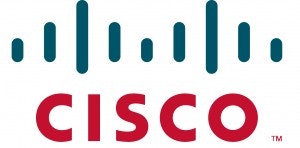
Cisco Systems, Inc. (NASDAQ:CSCO) is looking to cater to this demand by adding valuable network-management solutions to its product portfolio. So is Cisco on the right track?
Cisco on a buying spree
Cisco Systems, Inc. (NASDAQ:CSCO) recently announced it is buying Ubiquisys for $310 million. Ubiquisys is the number-one small-cell access-point vendor and has some 70 carrier customers and others on its books, including T-Mobile, Google Inc (NASDAQ:GOOG), SFR and Softbank.
Small-cell technology assists wireless carriers in fighting network congestion by offloading mobile-data traffic onto a wired backhaul. Ubiquisys is also into self-optimizing network architecture, which enhances network capacity by dynamically allocating resources according to real-time changing demands. Ubiquisys will also be able to help Cisco’s cloud-deployment strategy with the Ubiquisys Smart Cell using EdgeCloud technology.
Cisco Systems, Inc. (NASDAQ:CSCO) com pleted its acquisition of Intucell earlier this year. Intucell has developed a very impressive self-optimizing network (SON) architecture, which enables networks to automatically adjust cell activity based on demand. That makes network congestion far more unlikely and outages far less severe. Intucell’s software also helps networks repair themselves.
In the long term, SON techniques like Intucell’s will become foundational technology for the future heterogeneous network. AT&T Inc. (NYSE:T) is one of Intucells biggest customers. AT&T Inc. (NYSE:T) deployed Intucell’s SON technology, which resulted in a 15% reduction in network congestion and improved call retain ability.
Cisco Systems, Inc. (NASDAQ:CSCO) also acquired Meraki, which provides Wi-Fi, switching, security and mobile device management via a centralized cloud platform. This purchase moves Cisco further toward a software and cloud-based business model.
Cisco’s foray into software-defined networking.
Software-defined networking (SDN) is fast emerging as a significant building block for next-generation carrier services and networks as it could add significant value in the process to redefine and optimize the data center. The worldwide market for software-defined networking products and services in the enterprise and cloud service-provider segments will grow from $360 million in 2013 to $3.7 billion by 2016, according to IDC.
Cisco Systems, Inc. (NASDAQ:CSCO) is taking quick actions to adopt SDN in its portfolio. It’s targeting five markets at once – data center, enterprise, service provider, cloud, and academia – with its strategy by adopting an open network environment.
It invested $100 million in Insieme, a start-up developing an SDN with an option of buying it at $750 million in future. This start-up will kick-start Cisco’s foray into SDN.
Cisco Systems, Inc. (NASDAQ:CSCO) also acquired Cariden with a price tag of $141 million. It provides service- optimization services to Verizon Communications Inc. (NYSE:VZ), Deutsche Telecom – the German owner of T-Mobile USA, SingTel, among others, and helps them perform real-time analysis of their network traffic and topology. It also helps service providers plan how they deploy new services on the network.
Newcomers
Alcatel Lucent SA (ADR) (NYSE:ALU) announced at the beginning of April that it’s entering the enterprise SDN field, making it one of the latest networking companies hopping in. The company created a start-up named Nuage Networks to create an SDN solution. It will incorporate the “Virtualized Services Platform (VSP).” Like other SDN technologies, VSP virtualizes the network infrastructure and automatically creates connectivity among computer resources.
